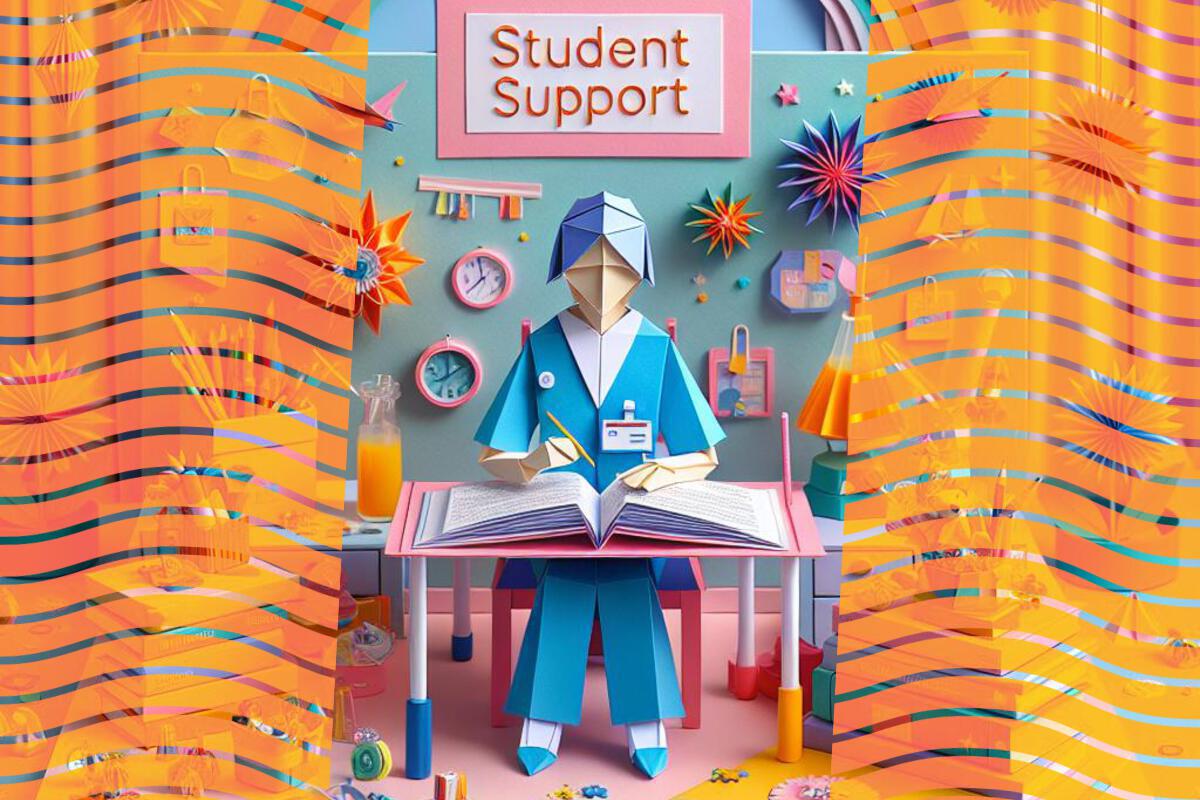Student Voice Analytics for Children's Nursing — UK student feedback 2018–2025
Scope. UK NSS open‑text comments for Children's Nursing (CAH02-04-05) students across academic years 2018–2025.
Volume. ≈1,380 comments; 98.5% successfully categorised to a single primary topic.
Overall mood. Roughly 53.7% Positive, 43.0% Negative, 3.3% Neutral (positive:negative ≈ 1.25:1).
What students are saying
The Children's Nursing experience is dominated by on‑the‑ground learning: Placements/fieldwork account for a quarter of all comments (≈25.2%). The tone is mildly positive overall (index ≈ +4.4) but sits below the wider sector baseline for the same topic.
A second strong theme is operational delivery. Taken together—Remote learning, Scheduling/timetabling, Organisation & management of the course, and Communication about course & teaching—these topics, alongside Placements, make up close to two‑fifths of all comments. Sentiment across this delivery cluster tends to run below sector, reflecting students’ desire for predictability, clear responsibilities and timely updates when plans change.
Set against that, people‑centred support is a clear strength. Personal Tutor references are strongly positive (index ≈ +48.7, well above sector), as are Teaching Staff (+44.3) and Availability of teaching staff (+44.9). Delivery of teaching is also positive (+21.0). Student support itself features prominently (10.0% share) with a positive tone (+20.1).
Assessment & feedback remains a pressure point. Feedback carries a negative tone (−26.9), and Marking criteria is one of the lowest‑scoring categories (−51.7). Assessment methods also lean negative. The common thread is clarity—when students cannot see how work is judged or how to act on feedback, sentiment falls.
Finally, several topics are less present here than sector‑wide: Type & breadth of course content (2.9% vs 6.9% sector), Module choice/variety (0.6% vs 4.2%), and Learning resources (1.0% vs 3.8%). That distribution underlines how clinical logistics and human support shape students’ day‑to‑day experience more than general facilities or module shopping.
Top categories by share (Children's Nursing vs sector)
| Category | Section | Share % | Sector % | Δ pp | Sentiment idx | Δ vs sector |
|---|---|---|---|---|---|---|
| Placements/ fieldwork/ trips | Learning opportunities | 25.2 | 3.4 | +21.7 | +4.4 | −7.4 |
| Student support | Academic support | 10.0 | 6.2 | +3.8 | +20.1 | +6.9 |
| COVID-19 | Others | 6.1 | 3.3 | +2.8 | −25.1 | +7.8 |
| Remote learning | The teaching on my course | 5.4 | 3.5 | +2.0 | −16.1 | −7.1 |
| Delivery of teaching | The teaching on my course | 5.0 | 5.4 | −0.4 | +21.0 | +12.3 |
| Teaching Staff | The teaching on my course | 4.6 | 6.7 | −2.2 | +44.3 | +8.8 |
| Personal Tutor | Academic support | 4.0 | 3.2 | +0.8 | +48.7 | +30.0 |
| Feedback | Assessment and feedback | 3.8 | 7.3 | −3.5 | −26.9 | −11.8 |
| Communication about course and teaching | Organisation and management | 2.9 | 1.7 | +1.3 | −39.2 | −3.4 |
| Type and breadth of course content | Learning opportunities | 2.9 | 6.9 | −4.0 | −0.3 | −22.9 |
Most negative categories (share ≥ 2%)
| Category | Section | Share % | Sector % | Δ pp | Sentiment idx | Δ vs sector |
|---|---|---|---|---|---|---|
| Marking criteria | Assessment and feedback | 2.4 | 3.5 | −1.2 | −51.7 | −6.0 |
| Workload | Organisation and management | 2.1 | 1.8 | +0.3 | −48.4 | −8.4 |
| Organisation, management of course | Organisation and management | 2.8 | 3.3 | −0.6 | −42.2 | −28.2 |
| Communication about course and teaching | Organisation and management | 2.9 | 1.7 | +1.3 | −39.2 | −3.4 |
| Scheduling/ timetabling | Organisation and management | 2.3 | 2.9 | −0.6 | −28.8 | −12.2 |
| Feedback | Assessment and feedback | 3.8 | 7.3 | −3.5 | −26.9 | −11.8 |
| COVID-19 | Others | 6.1 | 3.3 | +2.8 | −25.1 | +7.8 |
Most positive categories (share ≥ 2%)
| Category | Section | Share % | Sector % | Δ pp | Sentiment idx | Δ vs sector |
|---|---|---|---|---|---|---|
| Personal Tutor | Academic support | 4.0 | 3.2 | +0.8 | +48.7 | +30.0 |
| Availability of teaching staff | Academic support | 2.1 | 2.1 | +0.0 | +44.9 | +5.6 |
| Teaching Staff | The teaching on my course | 4.6 | 6.7 | −2.2 | +44.3 | +8.8 |
| Student life | Learning community | 2.4 | 3.2 | −0.8 | +22.7 | −9.4 |
| Delivery of teaching | The teaching on my course | 5.0 | 5.4 | −0.4 | +21.0 | +12.3 |
| Student support | Academic support | 10.0 | 6.2 | +3.8 | +20.1 | +6.9 |
| Placements/ fieldwork/ trips | Learning opportunities | 25.2 | 3.4 | +21.7 | +4.4 | −7.4 |
What this means in practice
-
Treat placements as a designed service. Ensure expectations, supervision and information are consistent; confirm arrangements early and communicate changes clearly. Small, reliable practices across sites lift both placement sentiment and surrounding delivery topics.
-
Tighten the operational rhythm. Name owners for timetabling, course organisation and comms; keep a single source of truth for changes; and publish short, regular updates. Predictability drives trust.
-
Make assessment criteria and feedback unambiguous. Share clear marking criteria and exemplars, use check‑list style rubrics, and agree realistic feedback turnaround times. Clarity and usefulness are the levers that move sentiment.
-
Amplify what works. Continue to foreground Personal Tutors and teaching staff accessibility. Capture and share these practices across modules and cohorts.
Data at a glance (2018–2025)
- Dominant topics by share: Placements (≈25.2%), Student support (≈10.0%), COVID‑19 (≈6.1%), Remote learning (≈5.4%), Delivery of teaching (≈5.0%), Teaching Staff (≈4.6%), Personal Tutor (≈4.0%).
- Delivery & ops cluster (Placements, Remote learning, Scheduling, Organisation & management, Course communications): ≈38.6% of all comments; tone sits below sector across the set.
- People & growth cluster (Personal Tutor, Student support, Teaching Staff, Availability of teaching staff, Delivery of teaching, Personal development, Student life): ≈29.6% of comments; consistently positive, with standout strengths for Personal Tutor, Teaching Staff and staff availability.
- How to read the numbers. Each comment is assigned one primary topic; share is that topic’s proportion of all comments. Sentiment is computed per sentence and summarised as an index from −100 (more negative than positive) to +100 (more positive than negative), then averaged at category level.
How Student Voice Analytics helps you
Student Voice Analytics turns open‑text survey comments into clear, prioritised actions. It tracks topics and sentiment over time, letting you see movement by year for Children's Nursing as well as for the whole institution and at fine‑grained department or school level.
It also enables like‑for‑like sector comparisons across CAH codes and by demographics (e.g., year of study, domicile, mode of study, campus/site, commuter status), so you can evidence whether change holds up against the right peer group. You can segment by site/provider, cohort and year, and generate concise, anonymised summaries for partners and programme teams. Export‑ready outputs (web, deck, dashboard) make it straightforward to share priorities and progress across the institution.




